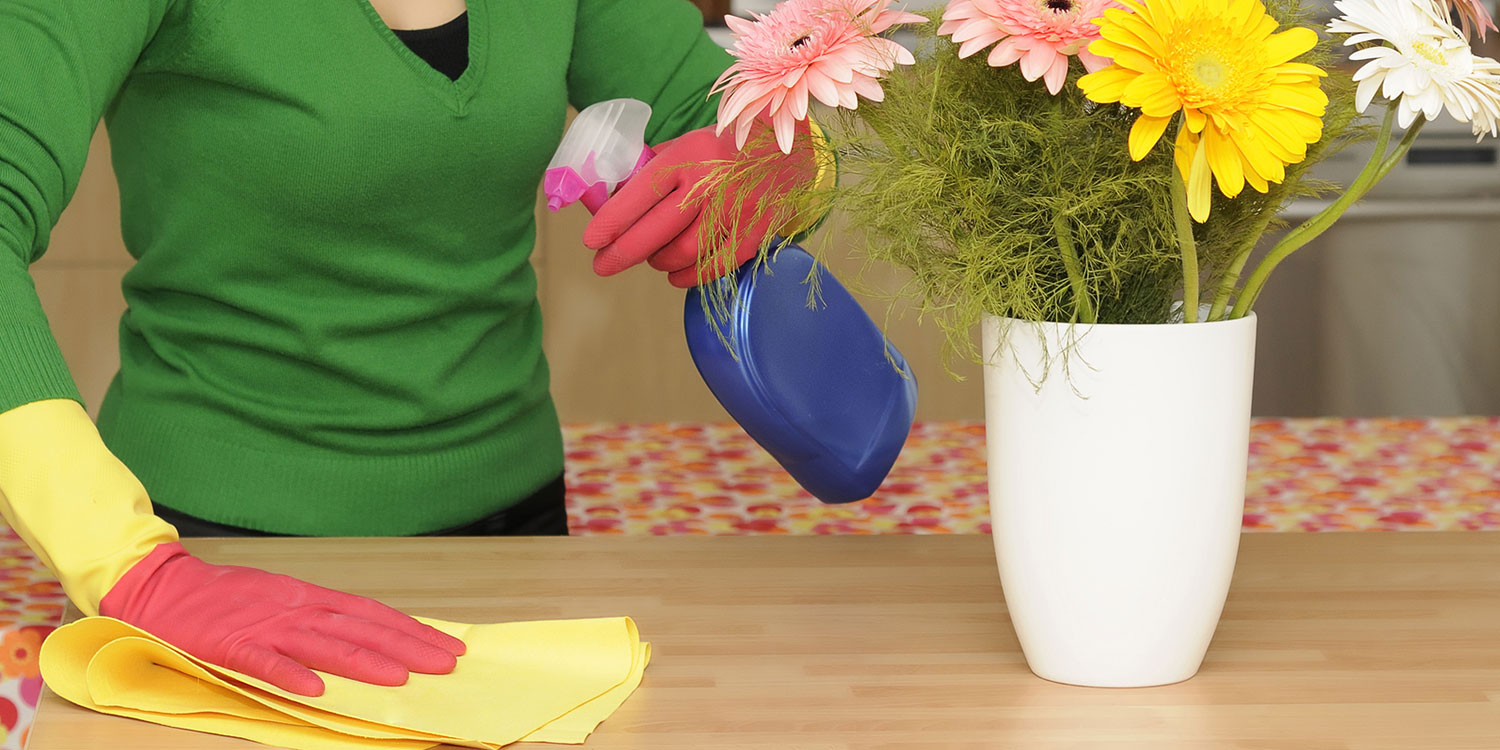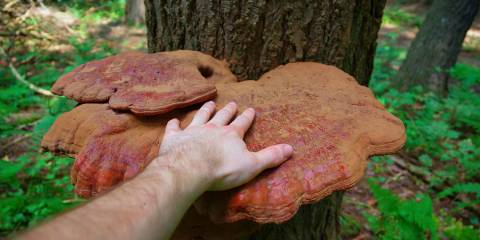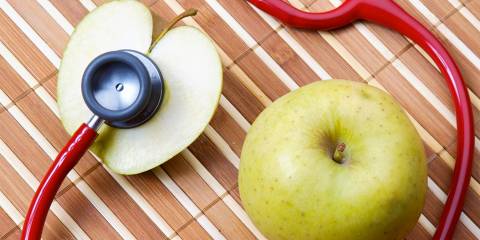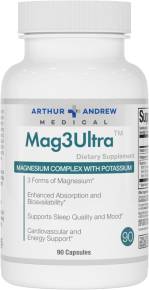Ironically, many of the products on the market designed for household cleaning actually add chemical contaminants to the air around you, the water outside, and potentially your own body—if you inhale them or absorb them through your skin.
Luckily, this doesn’t mean you can’t clean your house. But it does mean you should clean smart: Read labels and do the research before you buy cleaning products; learn which products and ingredients to avoid; and stock up on safe alternatives.
In many cases, being smart about cleaning translates to being smart about your pocketbook as well, as some inexpensive items you may already have on hand, such as vinegar and baking soda, are great substitutes for more costly and potentially toxic cleansers.
When it comes to cleaning, it’s easy being green! And it’s safer for you, your household, and the world.
Risks of Chemical Cleaning Supplies
-
Environmental Risks
The U.S. Environmental Protection Agency reports that the average home may have as much as 100 pounds of environmentally harmful chemicals in the basement, garage, and other storage areas. Those products can contaminate your septic tank or pollute the groundwater if they’re poured down drains or toilets.
-
Human Health Risks
Toxic ingredients in cleaning products can be dangerous to children and pets. One study published in Pediatrics found that close to 270,000 children were treated in emergency rooms between 1990 and 2006 for injuries related to exposure to household cleansers. Most of the harm came from ingesting toxic liquids packaged in spray bottles; the product most commonly associated with injuries was bleach.
Adults who use household cleansers, or are regularly exposed “second-hand” to airborne cleaning products, are at risk too. Research indicates that people who use chemical sprays—particularly for cleaning glass, polishing furniture, or freshening the air—face an increased risk of developing asthma.
How to Choose Safe Cleaning Products
With a slew of cleansers that label themselves “green,” “eco-friendly,” “natural,” and the like competing for space in stores with the commercial products we remember from childhood, it’s hard to know what the best options are for ourselves and the environment. And reading the fine print on the ingredients list can be confusing, if, like most of us, you’re not a chemical engineer. Here are a few guidelines to help you decide which cleaners to put into your shopping cart.
-
Check Ingredients
Seek out products from companies that name every ingredient on the package or on their website – you’ll easily be able to discover whether they are safe. Such cleansers can be hard to find, though, as manufacturers are not require by law to list specific ingredients on their labels. If you can’t find any with detailed ingredient listings, select products that tell you what’s not inside—for example “No ammonia,” “No chlorine,” “No petrochemicals,” and “No sodium lauryl or laureth sulfate.”
-
Look for Endorsements
Independent groups such as Green Seal, Cradle to Cradle, the Leaping Bunny, and the Environmental Protection Agency’s Design for the Environment program analyze products and certify that their ingredients do not pose a risk to health or the environment.
-
Be Skeptical of Claims
Words like “natural,” “eco-friendly,” and “non-toxic” aren’t backed up by any federal or industry regulations, so they can mean almost anything – or nothing. Similarly, “biodegradable” sounds earth-friendly, but in truth, every substance will break down in time, under the right conditions.
-
Avoid Surfactants
Such as alkylphenol ethoxylates (APEs), DEA, and TEA; nerve-damaging butyl cellosolve; chlorine; ammonia; fragrances containing phthalates; the antibacterial triclosan; and petroleum-based ingredients. (Green Guide #2) Stay away from 1,4 dicholorobenzene (a volatile organic compound also known as 1,4 DCB): It’s what puts the odor into mothballs and can also be found in air fresheners and insecticides – and it can trigger asthma.
Suggested Alternatives for Cleaning
What worked for your grandmother will also work for you. You can create your own safe cleaning products, in some cases, by simply reaching into the cupboard. Try these ideas for safe (and economical!) cleaning:
-
Windows
DIY goddess Martha Stewart suggests mixing equal parts white vinegar and hot water, and applying with a good quality squeegee.
-
Kitchens, bathrooms, and laundry
You put it in your homemade cookies and you probably have an open box absorbing odors in your refrigerator too. Green living expert Annie B. Bond suggests some other uses for baking soda: Sprinkle it on a damp sponge or cloth, and it can be used as a gentle, nonabrasive cleanser for countertops, sinks, bathtubs, ovens, and on fiberglass. Add a cup to your washerload, and it will neutralize odors. (Use it as an air freshener and carpet deodorizer too!)
-
Carpets and Rugs
If you’re dealing with a season’s worth of dirt, sand, or salt on rugs that aren’t fastened to the floor, take the rug outside and beat it with a broom. To attack stains before they’ve set, try dousing the soiled area with club soda, then blot with a rag. If you’re dealing with a big spill, cover it with cornmeal (hint: in terms of amount, think “dump” rather than “sprinkle”), wait 5 to 15 minutes, and vacuum. To make spot cleaner, put one-quarter cup liquid soap and one-third cup water into a blender and mix until foamy. Spray the mixture on the spot, then rinse with vinegar. To deodorize: sprinkle baking soda or cornstarch on the carpet (use about a cup per medium-size room), wait 30 minutes, then vacuum.
-
All-Purpose Cleaning
Here’s a quick and easy recipe that may replace your conventional all-purpose cleanser. Mix one-half cup of borax with one gallon of hot water. Make sure the borax dissolves completely. Apply, then wipe clean with a rag. (For one spray-bottle’s worth, use one-eighth cup of borax and a quart of hot water.)
-
Wood Furniture
Dust and polish your wood furniture with a mixture of one-half cup white vinegar and one teaspoon olive oil.
-
Metal
To polish copper and brass, add white vinegar to 2 tablespoons of salt to make a paste (adding flour will reduce the abrasiveness, if desired). Apply with a rag and rub clean. To polish stainless steel, apply baking soda with a damp cloth. Scrub stubborn spots with white vinegar.




